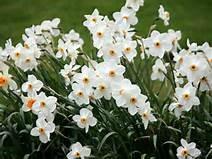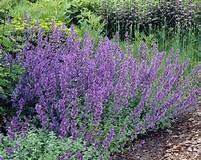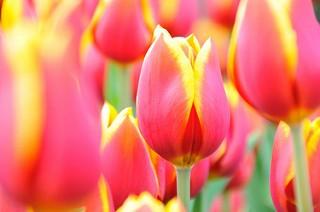What to do with spent bulbs
-
Nothing says spring has sprung like the sight of dazzling daffodils. As we cycle through the seasons — and yes, we experience seasons even in our temperate Mediterranean climate — often cool, gloomy winter days are instantly brightened when perky narcissus burst into view with their colorful bloom.

Early spring brings forth legions of bulbs and corms that have grown and multiplied over the years. For gardeners new to bulbs and naturalizing, spring bulbs can be your best friends for bringing color and joy to your garden. Think of them as the gift that keeps on giving.
After we populate our gardens with a variety of bulbs, how do we encourage them to return and bloom next year?
Daffodils: don’t cut, fold, braid, spindle, or rubber-band the leaves
Daffodils, also known as narcissus or jonquils and in England, the Lent lily, are probably our best-known spring harbinger. The American Daffodil Society recommends the name daffodil except in highly scientific papers. Daffodils are wonderful, reliable bulbs for naturalizing — that is, they will multiply over time on their own. Caring for the bulbs after bloom is important for their longevity.
Remove the spent bloom (deadhead) but leave the stem and leaves. The bloom instinctively wants to make seeds, which will diminish the strength of the bulb.
Each leaf needs to be exposed to the sun to perform an essential function, using the sun’s energy to transform basic elements such as oxygen, nitrogen, phosphorous, and potassium into food, which is stored in the white fleshy part of the bulb. It is important not to interfere with this photosynthesis process. If you want your bulbs to re-bloom, it’s vital that the leaves remain in place until they have withered and turned yellow. This may take six to eight weeks, depending on the weather. Allow the dead leaves to decompose in place or remove the foliage when it is yellowed, totally limp, and pulls away with no resistance. A variety of options to help hide the yellowed withering foliage have been suggested to gardeners, but according to well-known garden writer, consultant, educator, and bulb maven Judy Glattstein, “It is absolutely prohibited to cut, fold, braid, spindle, or rubber-band bulb foliage.”
Perennials such as forget-me-nots, hostas, nepeta, daylilies, and ornamental grasses are great companion plants and will provide attractive coverage for the ripening foliage. Overplanting bulb areas with shallow-rooted annuals such as pansies is another option. Alternatively, dig up the bulbs after bloom and place them, with their foliage still attached, in a deep trench in an out of the way section of your garden. Mark the area carefully with golf tees or other reminders to help you find the bulbs when dormant, then dig them up in the fall and replant.
When you notice a decline in bloom, the bulbs may be overcrowded and will need to be dug up and divided. Plants can be divided and transplanted while they are in bloom, which may help you find the ideal location for the surplus bulbs.
It is important to remove the spent blooms from daffodils, hyacinths, alliums, and tulips. Smaller bulbs such as freesias, crocus, muscari, scilla, snowdrops, and anemones naturalize through seeds as well as bulb offsets, so it’s not necessary to deadhead them.
Tulips like it cold in winter
Tulips are far more challenging to entice to re-bloom and are most often grown as annuals. Native to cold climates, tulips need a winter cooling or freeze. To increase the possibility of re-blooming, dig up the bulbs after flowering, protect them in a container of peat moss until fall, then refrigerate the bulbs for 10 to 12 weeks before planting. Or, plan to order a batch of tulip bulbs every year — there’s always a new variety to try.
Enjoy your spring flowering bulbs. Take photos or make drawings of the planted areas to help you remember where bulbs are growing. Look around your neighborhood to see what bulbs are performing well in your microclimate and chart out next fall’s planting season.
Original articles by Martha Proctor and Jane Scurich for the Marin IJ
Edited for the Leaflet by Jane Scurich



